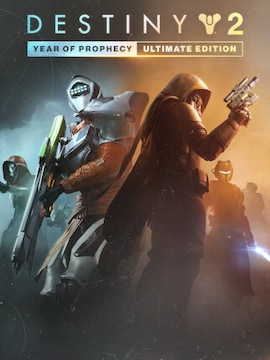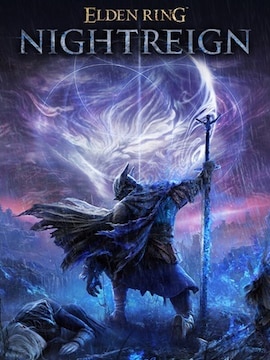While we wait for ATLUS to announce Persona 6 (come on, we know it’s coming! Right?), you might wonder how the previous entries compare to one another.
But which previous entries are we talking about? You’d think there are 5 Persona games, but many come in different versions – like Persona 3, Persona 3 Portable, Persona 3 FES, and Persona 3 Reloaded.
And then there are spin-offs, like Persona 5 Strikers or Persona 4: Dancing All Night, completely different from the mainline games in terms of gameplay.
Our ranking will explain the differences between the versions and which one we recommend.
| Game | Release | Genre | Developer | Video | |
|---|---|---|---|---|---|
 | Persona 3 Portable | 2023-01-19 | Adventure & Role-playing (RPG) | Atlus | |
 | Persona 3 Reload | 2024-02-02 | Role-playing (RPG) & Strategy | Atlus | |
 | Persona 4 Golden | 2020-06-13 | Role-playing (RPG) & Visual Novel | Atlus | |
 | Persona 4 Arena Ultimax | 2022-03-16 | Visual Novel & Fighting | Arc System Works | |
 | Persona 5 | 2016-09-15 | Turn-based strategy (TBS) & Role-playing (RPG) | Atlus | |
 | Persona 5 Royal | 2022-10-21 | Role-playing (RPG) & Turn-based strategy (TBS) | Atlus | |
 | Persona 5 Strikers | 2021-02-23 | Role-playing (RPG) & Hack and slash/Beat 'em up | Omega Force | |
 | Persona 5 Tactica | 2023-11-17 | Role-playing (RPG) & Simulator | Atlus | |
 | Persona Collection | 2023-06-10 | Turn-based strategy (TBS) & Role-playing (RPG) | Atlus | |
 | Shin Megami Tensei III Nocturne HD Remaster | 2021-05-25 | Role-playing (RPG) & Turn-based strategy (TBS) | Atlus | |
 | Shin Megami Tensei V: Vengeance | 2024-06-14 | Role-playing (RPG) & Turn-based strategy (TBS) | Atlus |
With that out of the way, let’s talk rankings!
Persona spin-offs ranked
Most of the Persona spin-offs are not relevant to the main story of the mainline games that spawned them. Their varied gameplay styles might be uninteresting to those looking for the classic turn-based combat meets visual novel experience of the Persona series. This is why we’ve decided to keep them separate from the mainline games in our ranking.
9. Persona 5: Dancing in Starlight
Persona Dancing is a rhythm game spin-off series which uses remixed versions of the songs featured in the mainline games.
Despite Persona 5’s amazing soundtrack, Persona 5: Dancing in Starlight is considered the worst Dancing game.
One reason is that it was released before other spin-offs and the Royal expansion. As a result, the Dancing game only features the songs from the base game and is missing many great hits from the subsequent games.
Additionally, the remixes of the songs that made it to P5:DiS aren’t the best and quickly get repetitive.
8. Persona 3: Dancing in Moonlight
Suffering from the same issues with the story as P5:DiS, Dancing in Moonlight is essentially the same game. It’s only ranked higher for a greater variety of songs.
7. Persona 4: Arena
This is the first of two fighting games set in the Persona universe. It serves as a crossover between Persona 4 and 3 and is a good fighting game in its own right.
Due to a limited roster, it’s considered inferior to its sequel, Persona 4: Arena Ultimax. As the first non-turn-based Persona spin-off, its success on release paved the way for the other spin-offs.
6. Persona Q: Shadow of the Labyrinth
Another Persona 3 and 4 crossover, Persona Q: SotL, is a mashup of Etrian Odyssey and Persona. It blends the gameplay styles and features old-school dungeon-crawling mechanics, requiring you to create your own maps. Although the final dungeons get some criticism for being too long and grindy, the game is generally praised, especially by fans of the genre.
While the story is a what-if scenario, it’s well-written and respectful toward the source material.
5. Persona Q2: New Cinema Labyrinth
A sequel to Shadow of the Labyrinth, the second Persona Q introduces more characters to the cast, including the main character of Persona 5 and the female MC from Persona 3: Portable.
It’s easier than its predecessor, making it more accessible to players unfamiliar with the Etrian Odyssey-type gameplay.
While Persona Q was already cute and silly, Q2 takes it to the next level with its humorous and over-the-top storytelling.
4. Persona 5: Tactica
As you can guess from the title, Persona 5 Tactica features tactical turn-based combat known from games like X-com. It also continues the trend of chibifying the cast of Persona.
When it comes to Persona 5 sequels, it’s not as story-heavy and relevant to the main plot of the original as Persona 5 Strikers.
While it doesn’t revolutionise the genre, it’s well-executed and a treat for fans of tactical turn-based RPGs.
3. Persona 4: Arena Ultimax
A sequel to Persona 4: Arena, it’s the second – and, as of now, last – fighting game set in the Persona universe. Its clear advantage over Arena is its large roster with three times as many characters as the original.
The gameplay of Persona 4 Arena Ultimax is good enough for the game to have been featured in the EVO fighting game tournament, so even if you’re a fighting game veteran, you won’t be disappointed.
2. Persona 4: Dancing All Night
Persona 4: Dancing All Night was the first Persona rhythm game spin-off, and remains the best entry to the series.
On top of its fun gameplay and a good variety of songs, P4:DAN tells a goofy yet charming story. It’s set after the events of Persona 4 Golden, making it a sequel to the main game.
1. Persona 5 Strikers
Persona 5 Strikers features Dynasty Warriors-type hack-and-slash gameplay combined with Persona-style visual novel storytelling. It also includes Persona 5’s mechanics such as stealth, and persona fusion.
Notably, it is a fully-fledged sequel to Persona 5 set sometime after the main game’s events. The game was developed in close cooperation with the team responsible for Persona 5, thanks to which it stays true to the original. Apart from the familiar Phantom Thieves, it adds new playable characters and antagonists. In addition, it expands the lore and introduces new perils in the Metaverse.
If you’re not opposed to Musou-style gameplay and enjoyed Persona 5, you should consider playing it.
Mainline Persona games ranked
With the spin-offs out of the way, let’s get to rating the mainline Persona games.
Honourable mention – Shin Megami Tensei: if…
This title is sometimes dubbed Persona 0, as this SMT spin-off led to the creation of the series.
Like the Persona games it was set in high school, and the female main character makes a cameo in Persona 1 and Persona 2. The game was released on Super Famicom in 1994 and later ported to PlayStation, Virtual Console, and iOS.
Unfortunately, it was never officially released in the Western markets, but a fan translation of the Super Famicom version was released in 2018. Newest Shin Megami Tensei in series installment is SMT V: Venegeance.
7. Revelations: Persona/Shin Megami Tensei: Persona
Revelations: Persona is a 1996 Shin Megami Tensei spin-off, retroactively referred to as Persona 1 by fans.
It was ported to PSP in 1999 and retitled Shin Megami Tensei: Persona. This version contains several cutscenes absent from the original cut, adds three difficulty levels, and features multiple gameplay and UI improvements. The English translation was also reworked, as the first one was panned for being unfaithful to the Japanese original.
The story and the setting still hold up well today. The Jungian inspirations add depth to the tribulations of the teenage characters trapped in a demon-infested world created by their ailing friend’s consciousness.
Gameplay-wise, the game sets the foundations for the next entries. The turn-based combat was adapted by the sequels, unlike the grid-based battlefield. The dungeon exploration is done in first-person, which can frustrate a modern player.
While this game kicked off our beloved series, it’s hard not to notice that it is rather dated. Many series-defining elements are absent – most notably the Social Link/Confidante system. The visuals are also less colourful and stylish than we’ve gotten used to, not to mention the dated graphics.
For this, the first Persona ranks lowest of all mainline Personas, despite being an amazing game in its own right.
6. Persona 2: Eternal Punishment
Note: there are two separate Persona 2 games. Persona 2: Innocent Sin is the first part of the Persona 2 duology, with Persona 2: Eternal Punishment being its direct continuation.
Fans are divided on which part is better, especially regarding the story.
Eternal Sin is a unique entry in the Persona series, as its main characters are not teenagers but adults. The creators used this opportunity to explore more mature themes than usual. It’s also the first Persona to feature a female protagonist.
As a sequel to P2:IS, Eternal Punishment has many callbacks to its predecessor, with many returning characters – so make sure you play them in the correct order.
5. Persona 2: Innocent Sin
In the ongoing discussion regarding which of the two parts of Persona 2 duology has a better story, Innocent Sin seems to have a slight advantage over its sequel.
Interestingly, Innocent Sin was localised to the Western markets after Eternal Punishment, explaining why it was originally released on PSP, and the sequel on PlayStation 1. The fact that the game’s antagonist is Hitler might be why the localisation was tricky. Don’t be fooled though – wild as it may be, the story of both Persona 2 parts is widely considered the best of the series.
Gameplay-wise, this early instalment of Persona is not as refined as its successors. The first-person dungeon exploration is still there, and the Social Links aren’t. But if you’re not easily scared away by dated graphics and old-school mechanics, you should try it out.
Sadly, neither part of Persona 2 is easily available unless you’re a retro console collector. So far, no remaster has been released on Steam or newer consoles, so PlayStation Vita or PS3 are your best bets.
4. Persona 4/Persona 4 Golden
Persona 4 Golden was the first of the older instalments released on Steam. The Golden version is the complete edition of the game that adds an epilogue and the true ending.
Persona 4 modernised the series’ looks and gameplay well enough that Persona 3 got an updated version for PSP that adapted the P4 engine to its needs. Sure, it doesn’t look fresh in 2025, but it’s entirely playable with almost none of the frustrations of Persona 1 and 2.
As in all Persona games, the story is great. Persona 4 features one of the most lovable casts of characters in the series who truly feel like found (and real) family.
3. Persona 3/Persona 3 FES/Persona 3 Portable
Apart from Persona 3 Reload, which we treat as a separate entry, Persona 3 comes in three flavours:
- Persona 3 – the original version from 2006, released on PlayStation 2.
- Persona 3 FES – the expanded version, released on PlayStation 2 in 2008
- Persona 3 Portable – the PSP remaster from 2010. This is the most ported version, released on PC, PS4, PS5, Xbox One, Series X, Series S, and Nintendo Switch.
The original Persona 3 is the most dated version with less content than the others. Notably, it introduced the beloved Social Link mechanic to the series.
So should you play FES or Portable? It’s… complicated.
Persona 3 Portable lets you choose between a male and a female main character. The female MC’s path adds Social Links unavailable to the male MC, including those with major playable male characters.
Moreover, the combat and exploration gameplay is vastly improved and more modern, as it uses modified Persona 4 systems. Among other quality-of-life improvements, it gives you full control of your party in combat. The graphics and UI received an overhaul too.
The dungeons are explored in 3rd person, but on the flip side city exploration is simplified and turned into a point-and-click affair.
Persona 3 FES has fewer gameplay and graphics improvements and is considerably more dated. It also doesn’t have a female MC and her Social Links.
However, unlike the Portable version, it contains a story-heavy epilogue called The Answer, which adds 30 hours of additional content.
Nonetheless, Persona 3 Portable is a much more accessible and comfortable way to experience P3. Whichever version you select, you’ll be treated to a fantastic storyline only eclipsed by the Persona 2 duology.
2. Persona 3 Reload
While Persona 3 Reload is a remake of Persona 3, we treat it as a separate entry because the differences are too great to consider it the same game.
The story is mostly the same as the original Persona 3. Sadly, it doesn’t let you play as the female MC from P3: Portable and experience her Social Links. On the other hand, the epilogue added in Persona 3 FES was adapted in an expansion pack called Episode Aigis – The Answer.
Regarding gameplay and graphics, Persona 3 Reload is undoubtedly an improvement over the original. Using the same engine as Persona 5, it’s much more approachable for a modern player than the original. Despite the similarities with P5, P3R retains its own identity.
The drawback is that the dungeons are procedurally generated. While true to the original, it causes them to be reminiscent of the lacklustre Mementos, rather than Persona 5’s hand-crafted Palaces.
1. Persona 5/Persona 5 Royal
After its release, Persona 5 quickly became one of the most acclaimed RPGs. It remains the best Persona gameplay- and graphics-wise. It features a great story and endearing characters.
The classic Persona combat system was refined and the dungeons – Palaces – were hand-crafted allowing for better design and more details.
It can’t be overstated just how stylish and well-thought-out the game’s UI and visual identity are. Together with the amazing soundtrack, it’s the full package.
An expanded version – Persona 5 Royal – was released in 2016. It adds a third semester with an exclusive storyline, new characters, enemies, and dungeons. It also comes with some gameplay tweaks and quality-of-life improvements, making it the best way to experience Persona 5.
Thanks to the modern design and graphics, this instalment is a great starting point when introducing someone to the series.
Summary
That’s it for our ranking of Persona spin-offs and mainline games. Hopefully, we helped you decide where to start and which instalments are your must-plays. With a series as acclaimed as Persona, there are no wrong choices!


















